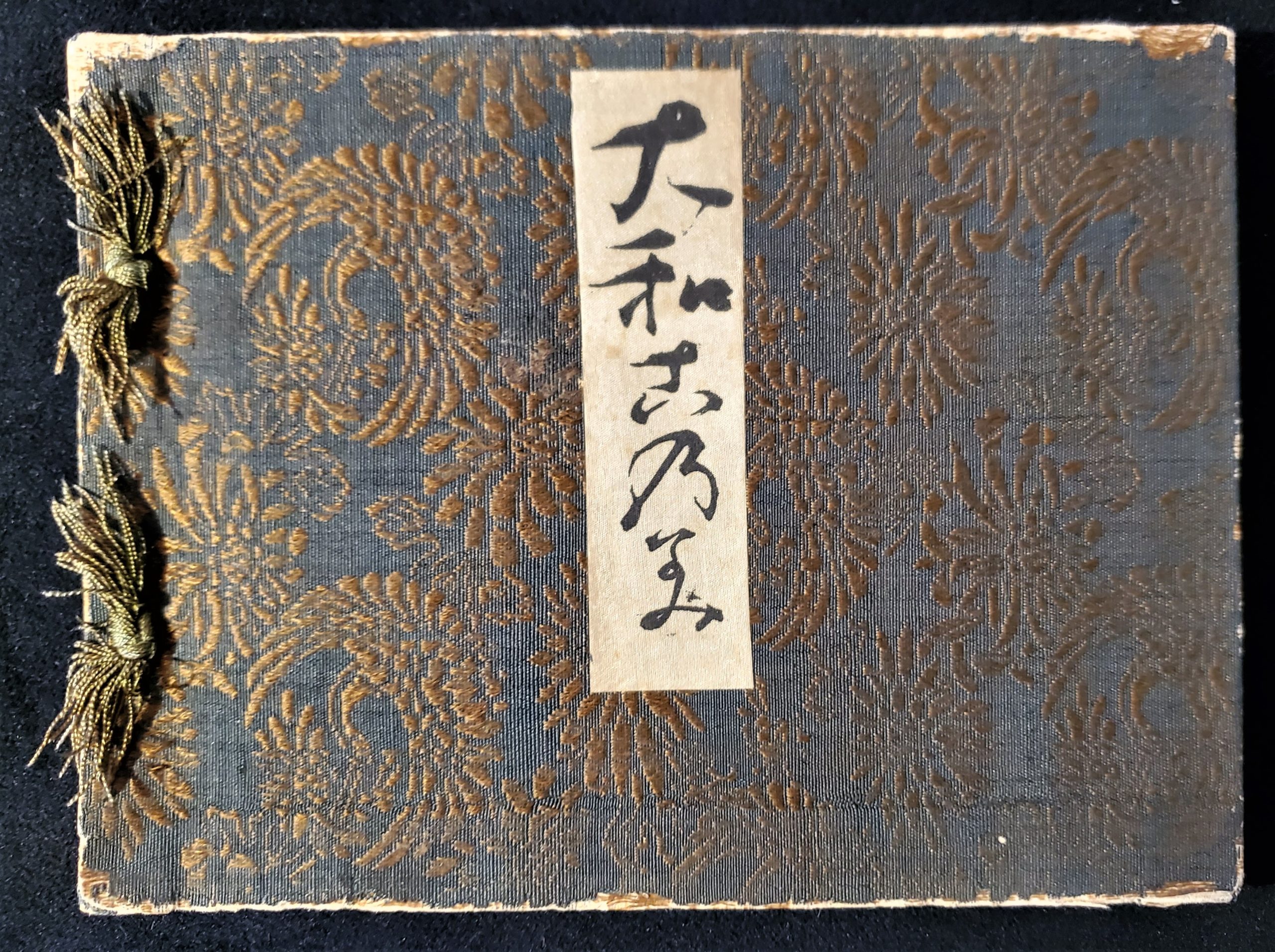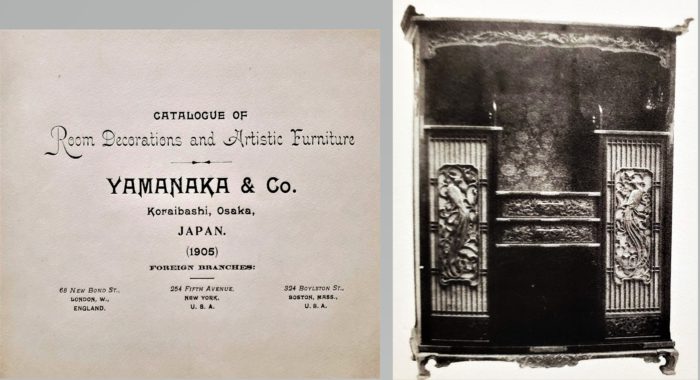
L: Title page of 1905 Yamanaka & Co Catalogue of Room Decorations and Artistic Furniture. R: No. 109. Cabinet of mulberry wood carved in designs of Angels, Phoenix and foliage. Mother of pearl inlaid work and gold lacquering.
This 1905 furniture trade catalog in the Cooper Hewitt Design Library is from the renowned Japanese art and antiques firm of Yamanaka & Co. Covered in silk brocade and bound with silk threads according to the ancient Japanese bookbinding technique of Yotsume Toji or stab-binding, it contains 36 photographic plates of elaborately carved, gilded, lacquered, and upholstered furniture made expressly for the American market.
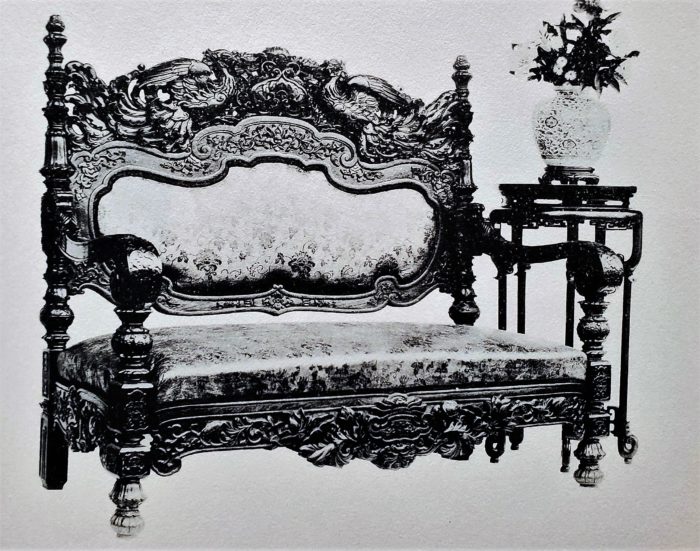
No.54. Sofa of the Horuji Temple style. Japanese mulberry wood carved in the Phoenix design, upholstered in “Kinkara-Kawa” leather.
Founded by a prominent family of Osaka-based art dealers and connoisseurs, Yamanaka & Co.’s first branch store outside of Japan was opened in New York City in 1894 by Sadajirō Yamanaka. Specializing in high-priced art and antiquities aimed at wealthy collectors and museums, the business was among the first firms to make Asian art available in the United States, helping to popularize the market for all things Japanese in the early twentieth century.
A savvy entrepreneur, Sadajirō established himself as a tastemaker and an expert in Japanese culture. He created the persona of a specialist possessed with the authority to translate the aesthetic of the Orient to his elite clientele. To create an authentic ambience Yamanaka designed his showroom in traditional Japanese style. The firm published lavish, professionally written and photographed catalogs that provided the historical and artistic significance of the objects.
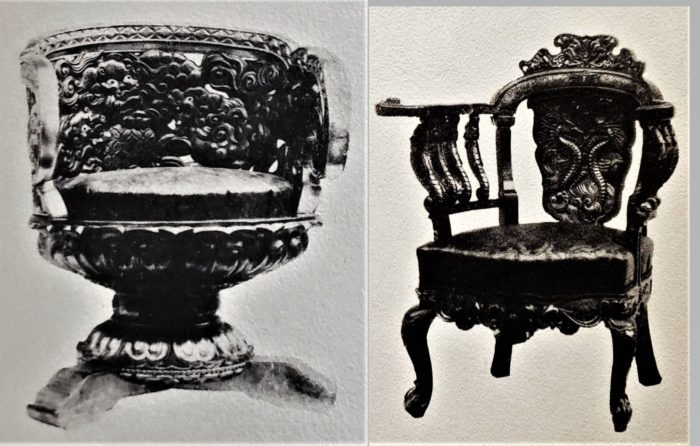
L: No.23. Library revolving chair with Lotus seat and carved lions. Magnolia hypleuca wood, lacquer and gold foil ornaments. Brocade of Paulownia Imperialus design. R: No.2. An Armchair. Lotus chair is elegantly carved and japanned in gold and colored lacquerings.
By the beginning of the twentieth century, the craze for Japonisme had found its way into middle-class homes. The American woman had become the primary consumer of household furnishings and goods. Recognizing a new potential market, in 1904 Yamanaka & Co. established a factory in Osaka to manufacture upscale room decorations and furniture for export to the US.
Targeting middle-class American women, the firm made Western style furniture, such as chairs upholstered with gilded leather or brocade made in Kyoto, but with Japanesque ornamentation.
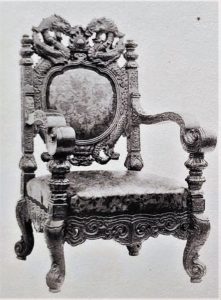
No. 60. The “Kwagenkei” Arm-chair. Carved in mulberry wood and upholstered with “Kinkara Kawa” leather. The ornamentation was originally used for a stone gong musical instrument in the temple of Horyuji.
The furnishings were decorated with typical Japanese motifs such as dragons, phoenix birds, fruit, chrysanthemums, turtles, and fish. Through today’s eyes, these may seem overdone, heavy, and sometimes even grotesque, but such ornamentation and craftsmanship appealed to the Victorians, Edwardians, and early twentieth- century consumers.
In his introduction to this catalog Yamanaka boasted that the firm won the “Grand Prize and Gold Medal Award at the Louisiana Purchase Exposition in St. Louis, 1904”. More than just a store, Yamanaka & Co. was a cultural institution.
Adrienne Meyer was an executive in the fashion industry for twenty years, before entering the Parsons Graduate Program, graduating in 2016. She has contributed important research to special projects at The New York Historical Society and the Cooper Hewitt , Smithsonian Design Museum and Library. She recently completed a Library internship researching furniture trade catalogs.
